COOKFOX Architects completes Chelsea Thicket office building with biophilic design principles
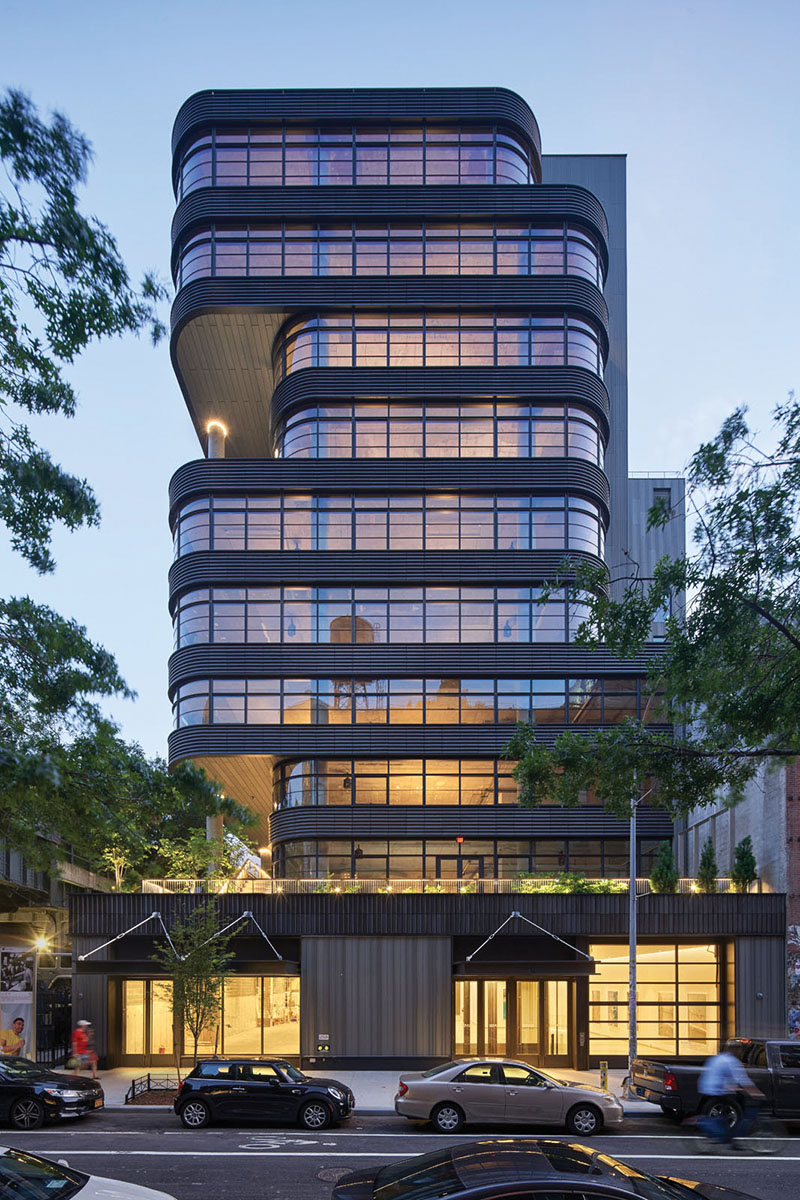 Manhattan, NY COOKFOX Architects completed 512 West 22nd St., a new office building on the High Line at a spot known as the Chelsea Thicket. Like all COOKFOX projects, the building was designed via principles of biophilia, for human health and well-being, for high energy performance and for resiliency. It is inspired by its proximity to the park’s public space and its location with connection to–and views of–the Hudson River. Designed to achieve LEED Gold certification, this building is unusual in that the planted areas of the roof, staircase and terraces represent greater square footage than its footprint.
Manhattan, NY COOKFOX Architects completed 512 West 22nd St., a new office building on the High Line at a spot known as the Chelsea Thicket. Like all COOKFOX projects, the building was designed via principles of biophilia, for human health and well-being, for high energy performance and for resiliency. It is inspired by its proximity to the park’s public space and its location with connection to–and views of–the Hudson River. Designed to achieve LEED Gold certification, this building is unusual in that the planted areas of the roof, staircase and terraces represent greater square footage than its footprint.
The structure of the building recalls the historical infrastructure and warehouse buildings of the neighborhood and the contemporary design that defines the area. Its materiality and form echo the High Line’s aesthetic, with industrial sash-inspired windows, anthracite terracotta, zinc, and granite façade. The custom terracotta profile rotates and opens at the curved edges of the building; the glass arcs round the corners, featuring operable windows that offer more direct control of the environment and access to outdoor air.
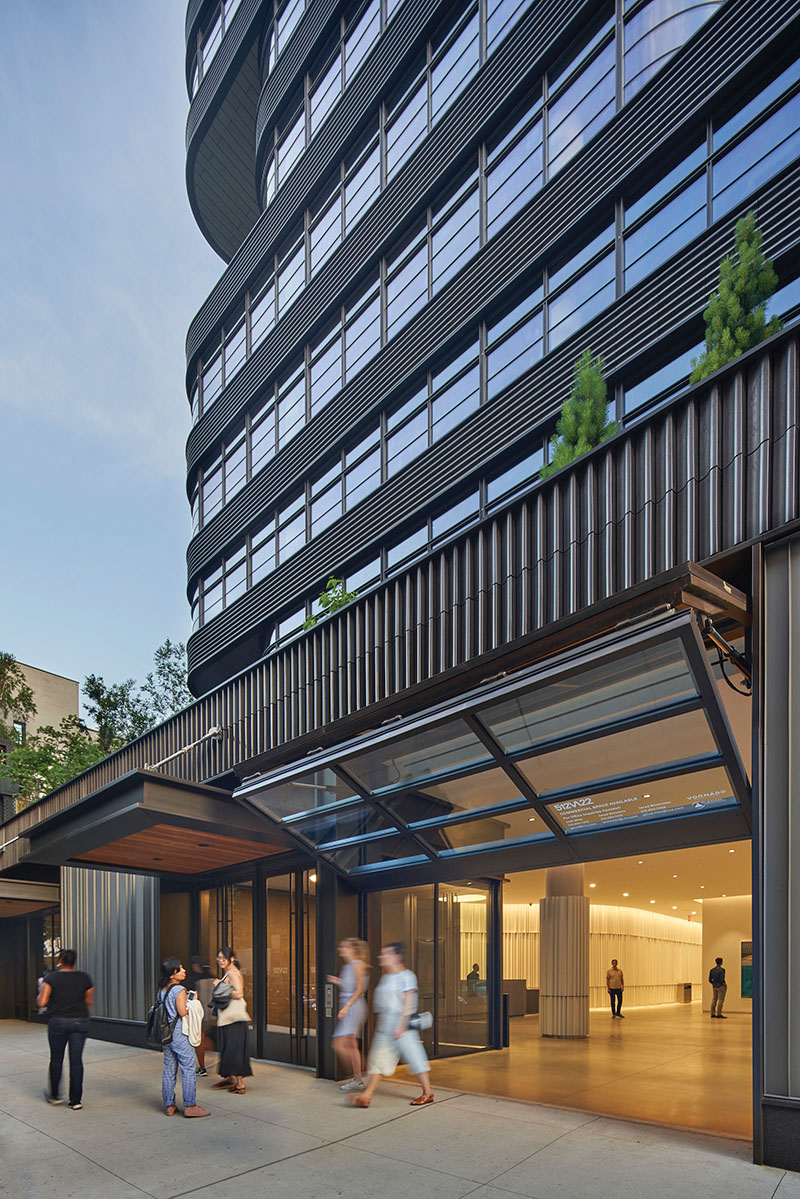
The 22nd St. lobby includes a curated event space that can open onto the sidewalk when the pane-glass garage door is lifted. Just off the lobby, a landscaped viewing garden offers a focal point at the elevator banks.
The office spaces above have been designed to create professional environments that support the well-being of employees. Large, light-filled floors with overhead air distribution and filtering systems are adaptable to a wide range of users, engineered for comfort and high-performance.
Taking cues from the High Line’s green corridor and connecting to the surrounding urban infrastructure, 512 features over 15,000 s/f of outdoor space for occupant use; landscaped terraces populated solely with native species are cut into the building’s profile on every floor, integrating nature into the workplace and offering intimate views of the adjacent trees and planted spaces. Along the High Line, continuous stepped terraces from levels two to four are designed for outdoor circulation, events, and other uses by tenants. At the second and third floors, the branches of the thicket meet the overhang above, merging into a canopy. Ascending to the fourth floor terrace and rising above the tree line opens sightlines to the city and Hudson River beyond. In total, the planted areas represent 110% of the footprint of the building.
Other notable aspects of this architectural design include resiliency features, per post-Sandy building codes, that can withstand 100-year flood predictions; an integrated rooftop watering and grey water system; and signature interior columns.
Troutbrook expands with boutique condo project and Marriott Fairfield Inn & Suites renovation




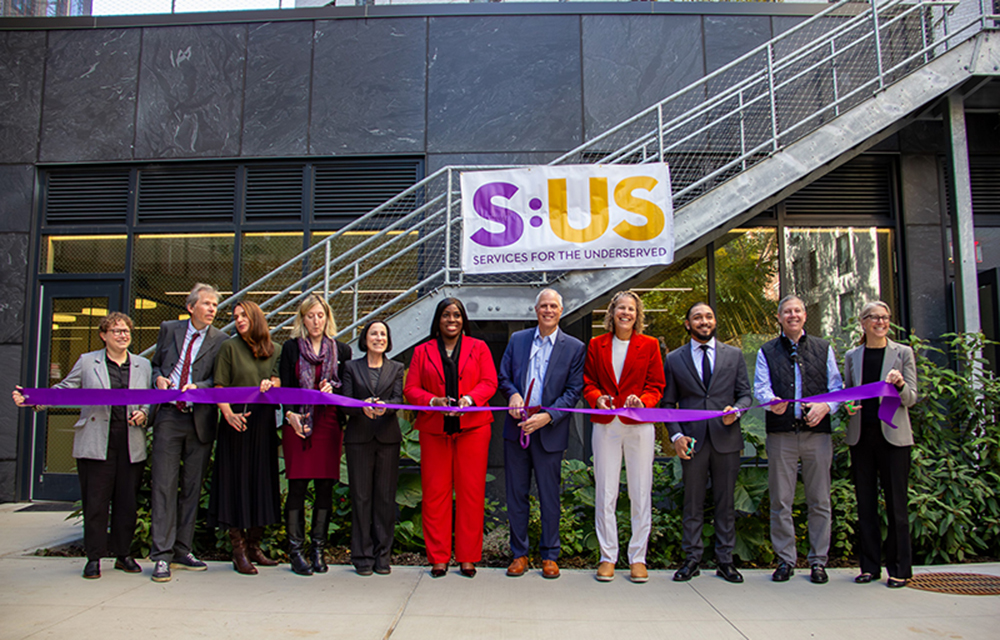
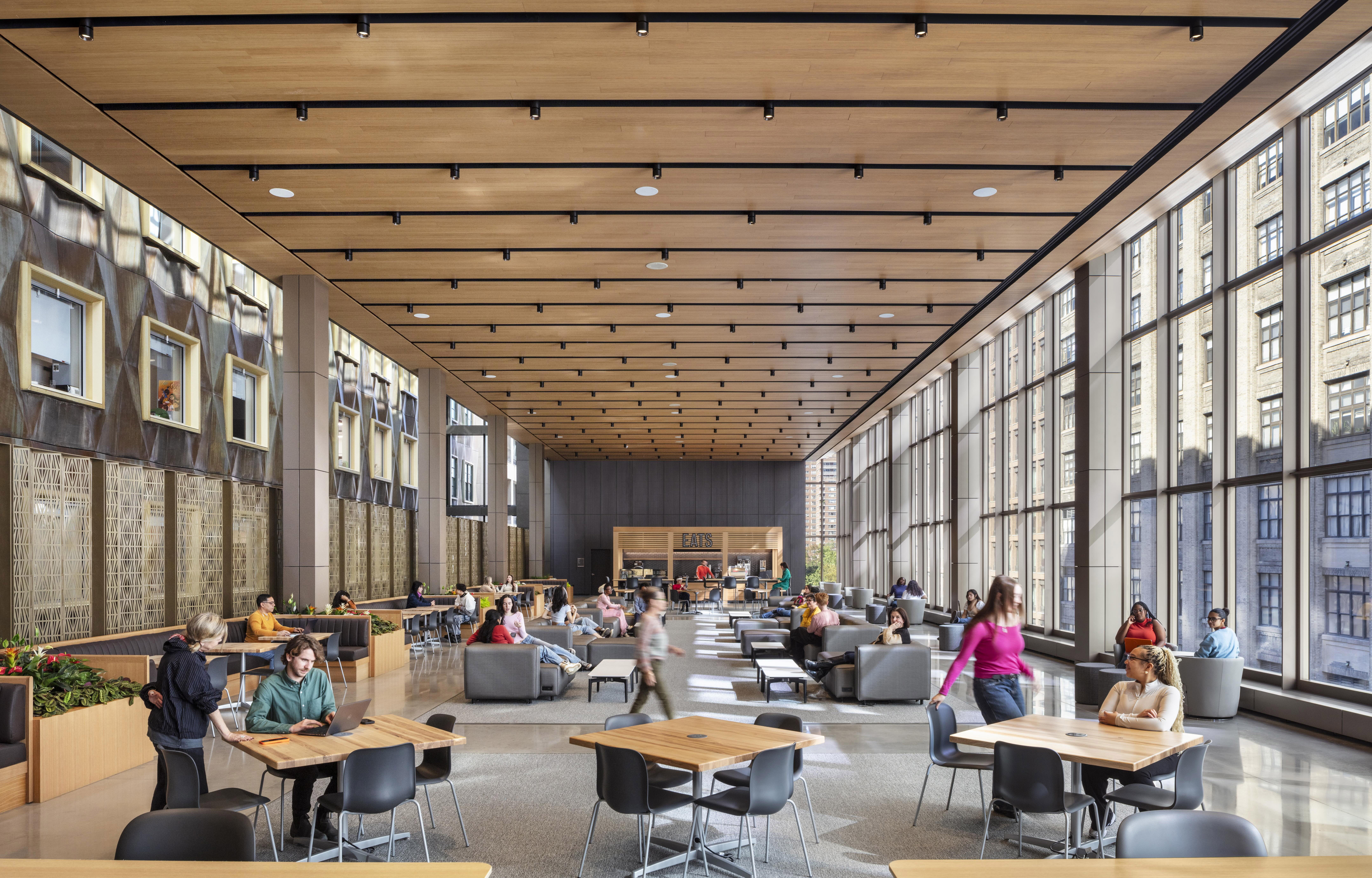
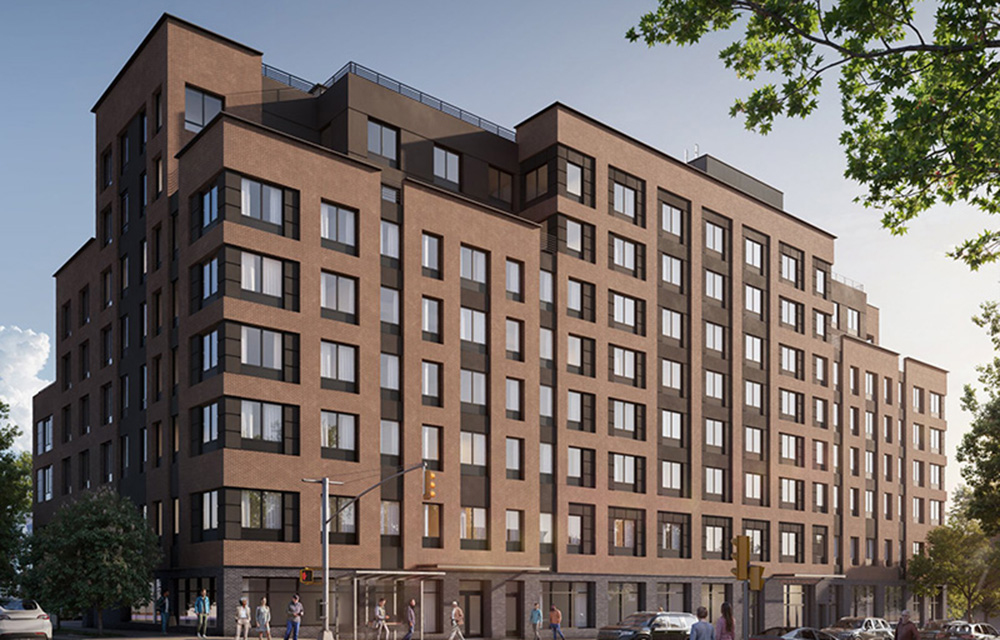

.gif)
.jpg)

.gif)